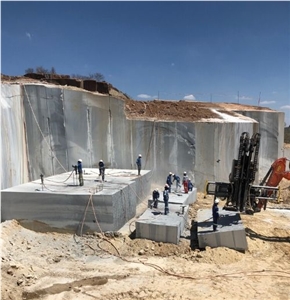Unlocking Natural Treasures: Granite Quarries in South Africa Unveiled
Unlocking Natural Treasures: Granite Quarries in South Africa Unveiled
Blog Article
Revealing the Mysteries of Granite Quarrying: Where Toughness and Beauty Meet
The world of granite quarrying is a world where the raw strength of nature assembles with human virtuosity to develop structures that stand the test of time with an air of elegance. From the depths of quarries to the careful polishing in workshops, the process of transforming granite into building wonders is a complex dance of practice and technology. As we peer into the depths of this ancient craft, we begin to discover the surprise intricacies that shape the really significance of our built environment.
The Origins of Granite Quarrying
In the annals of architectural history, the origins of granite quarrying are shrouded in a tapestry of ancient craftsmanship and geological marvels. Dating back to ancient Egypt and Mesopotamia, the extraction of granite from quarries marked the beginning of a journey that would eventually result in the development of a few of the world's most renowned structures.
Granite quarrying's roots can be traced to the competent artisans who recognized the stone's resilience and aesthetic appeal. Through a mix of primitive devices and large decision, these very early quarry employees uncovered granite blocks that would come to be the foundation of people.
As civilizations progressed, so did the techniques of quarrying granite. The Romans, renowned for their design prowess, established innovative approaches for extracting granite to create monoliths, holy places, and roadways that stood the test of time.
The heritage of these ancient quarrying techniques proceeds to form contemporary design, with granite remaining an icon of toughness and sophistication in building projects around the world. (granite quarries in south africa)
Devices of the Quarrying Trade
The advancement of granite quarrying methods from ancient human beings to contemporary times highlights the vital role played by the devices of the quarrying trade in forming the market's practices. In old times, quarrying tools were rudimentary, usually containing chisels, hammers, and wedges made from products like bronze or iron. These tools called for considerable workforce and time to essence granite obstructs from quarries.

In addition, the intro of pneumatically-driven devices and high-powered machinery has substantially minimized the physical labor needed in quarrying operations, improving worker security and productivity. As the quarrying industry remains to introduce, the devices of the profession stay at the leading edge of driving progress and shaping the future of granite extraction.
Extracting Blocks of Granite
Utilizing accuracy machinery and progressed methods, the removal of granite blocks from quarries has actually ended up being a sophisticated procedure in the contemporary quarrying sector. Managed blasting methods are then utilized to break apart the granite into convenient sections.

Polishing and Ending Up Methods
To accomplish a remarkable surface on granite blocks, knowledgeable artisans use a series of careful polishing and completing strategies. After the initial removal and forming processes, the granite obstructs undertake an extensive sprucing up phase to improve their all-natural beauty and sturdiness.
Along with polishing, completing strategies are put on further fine-tune the granite's look. These techniques may include flaming, sharpening, or brushing, each offering distinct appearances and finishes to suit different aesthetic choices. Flaming, for example, involves exposing the granite surface to high temperature levels to develop this a harsh, distinctive finish, ideal for outside applications where slip-resistance is necessary. Honing, on the great post to read other hand, supplies a matte coating that is smooth to the touch, excellent for interior countertops and flooring. By very carefully picking and using these polishing and completing methods, craftsmens can change raw granite blocks into splendid pieces that display both toughness and beauty.

Ecological Impact and Sustainability
With the expanding emphasis on ecological consciousness in the market, granite quarrying techniques are progressively looked at for their influence on all-natural resources and lasting sustainability. Quarrying for granite can have significant ecological implications. The extraction procedure frequently includes making use of hefty machinery, dynamites, and huge quantities of water, resulting in environment devastation, soil erosion, and water air pollution. Additionally, the transportation of granite from quarries to processing centers creates carbon emissions, even more adding to ecological degradation. granite quarries in south africa.
To minimize these impacts and ensure sustainability in granite quarrying, industry stakeholders are adopting different steps. Carrying out sophisticated innovations to reduce power intake and water use, redeeming quarried land for environmental reconstruction, and promoting accountable sourcing techniques are some methods being employed. Accreditations such as the Forest Stewardship Council (FSC) and the Management in Energy and Environmental you could check here Design (LEED) assistance consumers determine ecologically friendly granite items.
Final Thought
To conclude, granite quarrying is a process that calls for specialized devices and techniques to essence blocks of granite and polish them to a high degree of surface. While the environmental impact of quarrying can be significant, efforts are being made to improve sustainability techniques in the industry. On the whole, granite quarrying is a fragile equilibrium in between taking advantage of the toughness and elegance of this all-natural stone while decreasing its effect on the environment.
Report this page